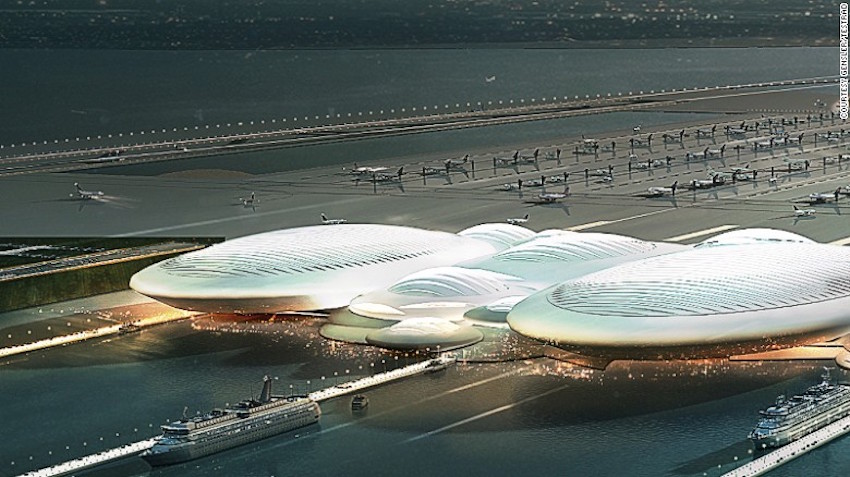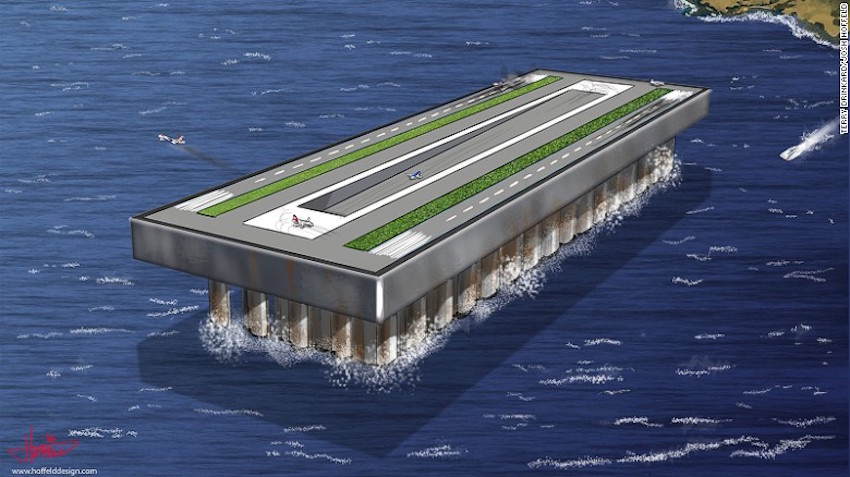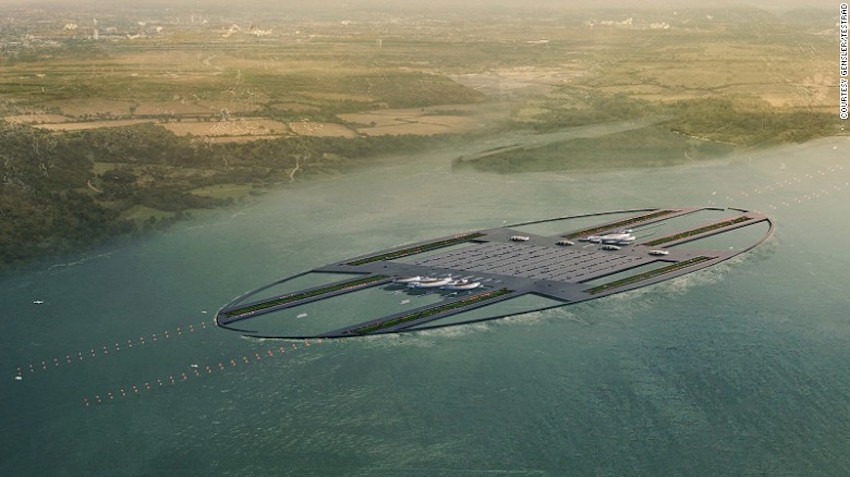Airports need a lot of space, but in the places most in need of air connections — islands and large metropolises — it’s a commodity that’s in short supply.
Floating deck
London Britannia Airport is a six-runway “floating airport” proposal to be built on an artificial island in the Thames Estuary, about 30 miles east of the UK capital.
Aircraft carriers have floating runways, but they’re also warships which need to be maneuverable and to travel at speed.
From our partners:
Forerunners from history
San Diego proposal
Floating aerotropolis
Offshore aerotropolis – American aeronautical engineer Terry Drinkards’s floating airport concept draws heavily from technologies and materials that have already been tested in the construction of deepwater oil rigs.
Bridging the Atlantic
Boris Island
Six runways for $63 billion
The scheme, put forward by architecture firm Gensler and Thames Estiary Research and Development (Testrad), would cost nearly $63 billion.
A question of economics





















